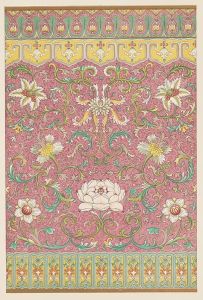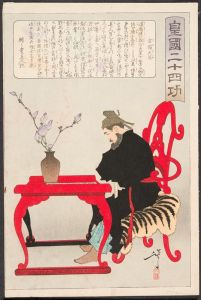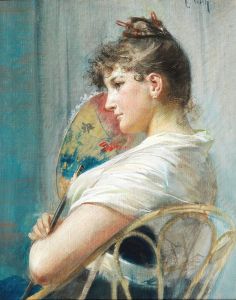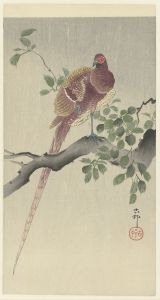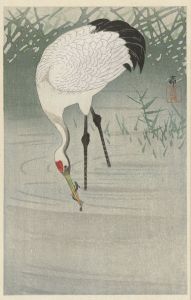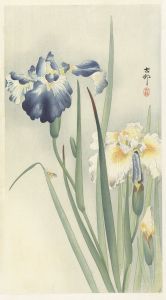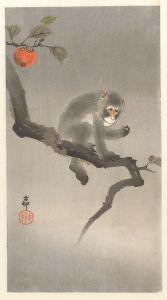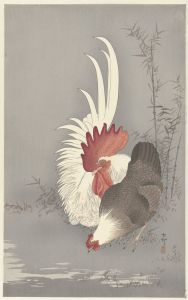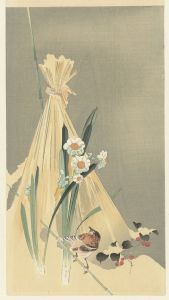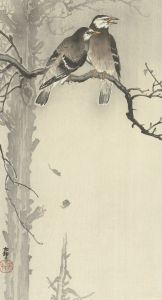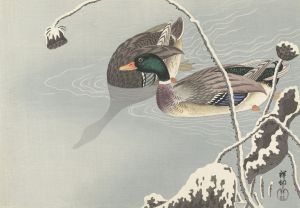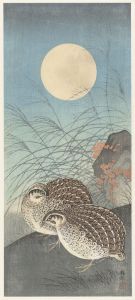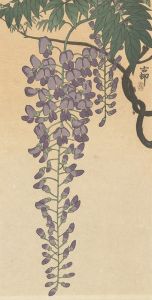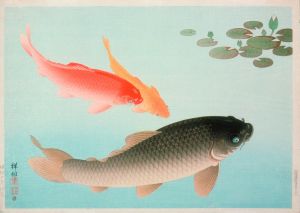
Wheatear with bamboo
A hand-painted replica of Ohara Koson’s masterpiece Wheatear with bamboo, meticulously crafted by professional artists to capture the true essence of the original. Each piece is created with museum-quality canvas and rare mineral pigments, carefully painted by experienced artists with delicate brushstrokes and rich, layered colors to perfectly recreate the texture of the original artwork. Unlike machine-printed reproductions, this hand-painted version brings the painting to life, infused with the artist’s emotions and skill in every stroke. Whether for personal collection or home decoration, it instantly elevates the artistic atmosphere of any space.
Ohara Koson (1877–1945) was a prominent Japanese artist known for his work in the shin-hanga movement, which revitalized traditional ukiyo-e art with a modern touch during the early 20th century. Koson specialized in kachō-e, or bird-and-flower prints, which were highly popular both in Japan and internationally. His works are celebrated for their delicate beauty, attention to detail, and the ability to capture the essence of nature.
"Wheatear with Bamboo" is one of Koson's notable prints, showcasing his mastery in depicting birds and natural elements. The artwork features a wheatear, a small passerine bird known for its distinctive plumage and migratory behavior, perched amidst bamboo stalks. Bamboo, a significant motif in Japanese art, symbolizes strength, resilience, and flexibility, often associated with positive attributes in Japanese culture.
Koson's technique involved the use of traditional woodblock printing methods, which he adapted to suit the aesthetic preferences of the shin-hanga movement. This movement aimed to breathe new life into the ukiyo-e tradition by incorporating Western artistic influences such as realism and the use of light and shadow, while still maintaining the quintessentially Japanese themes and techniques. Koson's prints often exhibit a harmonious blend of these elements, resulting in works that are both visually striking and culturally resonant.
In "Wheatear with Bamboo," Koson employs a subtle color palette, utilizing shades of green, brown, and gray to create a serene and naturalistic scene. The composition is carefully balanced, with the wheatear positioned in a way that draws the viewer's eye, while the bamboo provides a structured yet organic backdrop. The attention to detail in the bird's feathers and the texture of the bamboo highlights Koson's skill in rendering natural subjects with precision and artistry.
Koson's work gained significant recognition during his lifetime, particularly among Western collectors who admired the exotic beauty and craftsmanship of Japanese prints. His bird-and-flower prints were especially popular, contributing to the global appreciation of Japanese art and influencing subsequent generations of artists. Today, Koson's prints, including "Wheatear with Bamboo," are held in high esteem by art historians and collectors alike, often featured in exhibitions and collections dedicated to Japanese art.
The legacy of Ohara Koson and his contributions to the shin-hanga movement continue to be celebrated, as his works exemplify the successful fusion of traditional Japanese art with modern influences. "Wheatear with Bamboo" remains a testament to Koson's artistic vision and his ability to capture the delicate beauty of nature through the medium of woodblock printing.





